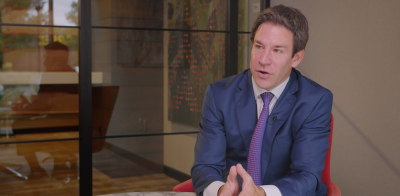After heavy losses in the first half of the year for both equities and bonds, markets have finally staged a proper bear market rally lasting longer than two weeks. This demonstrates once again that markets don’t go up in a straight line nor do they go down in a straight line (after multiple Fed driven V-shaped market recoveries in the post-global financial crisis period that wise old adage was pining to make a comeback).
- Now that both equities and bonds have recaptured approximately 40% of their 2022 losses (yet are still down around -13% year to date (YTD) and -8%, respectively—ouch), the question everyone is asking is, “What now?” The question is typically asked about the forward trajectory of the economy, markets and most importantly for asset allocation.
- Economy. Heightened fragility
Recession ahead? Unfortunately, the data for the economy continues to point toward a much higher probability of a “classic” recession where unemployment increases significantly as opposed to just two quarters of real gross domestic product (GDP) contraction like Q1 and Q2 of this year. The U.S. consumer has almost single-handedly kept the global economy going so far in 2022, as every other contributor to the economy (investment including housing and inventory, government spending and trade) has detracted from growth so far this year. As a reminder, recessions typically lead to substantial declines in equity markets.
Can consumers keep their heads above water? However, given the still extremely tight labor market, still larger income gains than consumption the past two-and-a-half years, substantial dry powder in terms of savings, there is still a possibility that the consumer can spend enough long enough to keep the economy afloat. The problem now, of course, is the Fed has started to aggressively tighten policy in order to choke off demand to slay the inflation demon. Given the fragile state of the economy going into aggressive tightening, the consumer’s ability to keep it going is getting harder and harder.
Inflation lurks: Even as the economy deteriorates, inflation still rages in the background at the highest levels in 40+ years causing financial stress for consumers and businesses. Despite all of the recession angst, inflation is still the number one economic and political problem in the country. - Equity markets. Caught between a rock and hard place
The Rock, Part 1: After the recent bear market rally, equity multiples are back to 18.3 x 2022 earnings and 17.1 x 2023 earnings. Let’s be generous and just focus on multiples for 2023 since we’re now halfway through 2022. As of this moment, we are only four multiple turns below where we entered the year. In a typical Fed tightening cycle, equity markets experience five to eight turns of multiple compression (including the benign tightening cycle of 2017–2018, but excluding the dotcom bubble collapse, which was a full ten).
The Rock, Part 2: The Fed has already hiked by 225 bps but is guiding to 100 bps–175 bps more. Far more critically, they have only just begun to drain their balance sheet. The Fed has only reduced it by $75 billion out of $8.965 trillion (less than 1%) and are still guiding toward $95 billion per month going forward—this is 4.5x the pace of the last Quantitative Tightening in terms of dollars, 3.6x in terms of Nominal GDP, and 2.9x in terms of existing money supply. Prior to any meaningful balance sheet reduction, money supply has actually contracted in Q2 after growing at an anemic 4.7% annualized pace in Q1. If the Fed actually moves ahead with this game plan, it is highly, highly unlikely that markets do not experience at least one more substantial decline leading to lower lows in price and taking equity multiples below 15.
The Rock, Part 3: Remember, the better the economy and markets perform and the more entrenched inflation becomes, the longer and more aggressively the Fed will tighten. The Fed wants tighter financial conditions (at least for now) and they always get what they want (eventually). Unless markets avoid the Rock and hit the Hard Place (see below) or somehow the Fed threads the needle, recent market jubilation over the potential for the Fed to eventually get less aggressive will turn to panic rather rapidly.
The hard place: As recession risk rises, the probability of earnings growth deteriorates and the probability of earnings declines increases. If a modest recession over the next 12 months causes a typical 20% decline in earnings, it means equity markets are currently trading at close to 23x 2023 earnings and not 17.1x, which would mean not only have we not had any multiple compression so far, we’ve also actually had multiple expansion! Do equity markets getting more expensive in this environment make any sense to anybody? Of course not! - Bond markets. The highs in yields may have occurred, meaning you’ll never have income again in duration sensitive vanilla fixed income.
Fixed income yields peaked? Now that recession risk has increased substantially, the probability that fixed income yields peaked back in June is much higher today than six weeks ago. As comforting as that may be for investors with large exposure to duration-sensitive fixed income, it is probably the coldest comfort one can find anywhere north of the South Pole.
At these current yield levels (2.64% for the 10-year Treasury Bond), one is doomed to earn paltry income for all eternity in vanilla fixed income. If we couldn’t see 10-year yields higher than 3.5% after four months of 8%+ and even one 9%+ CPI number, the probability of ever receiving a decent income stream again is about as high as the sun rising in the west.
Lastly, if inflation does not retreat soon, and substantially, yields could certainly rip higher once again causing substantial further losses. - Asset Allocation. Fight Inertia! Don’t waste this opportunity to rebalance away from 60/40 and embrace alternatives! The time for alts is now!
The gravy train: Let’s face it, almost every investor on the planet except for a select few became pretty complacent over the last 13, 20 and 30 years from never-ending historic gains in equities and bond yields that kept going lower and lower and lower. Every risk was a good risk and the riskier the better—if something goes wrong, don’t sweat it, the Fed will bail you out. If you engaged in rational caution at times, you inevitably underperformed the S&P, the Nasdaq and anything with “growth” for a long time.
Wake-up calls all around: For many investors (at least the sane ones), the first half of the year was a wake-up call—equities and bonds can actually both go down at the same time. The Fed won’t always be there to bail out markets (although judging from recent market price action, old habits die hard). Inflation can actually go above 2% for a sustained period of time.
The choppy, sloppy mess: No one is calling for 20%-plus losses in equities and 10%-plus losses in bonds every six-month period from now until the end of time. No one is even calling for a lost decade for equities (the original galactic mean reversion). However, when we put all the factors together, we will more than likely stay in a Choppy, Sloppy Mess environment for a while, where meaningful gains for equities and bonds and anything other than paltry income will be hard to come by. Even in best-case scenarios, we’re not going back to a 2019–2021 market (green light go) anytime soon.
So, fight inertia! Take this gift of temporary market jubilance and embrace alternative strategies that may provide the following attributes. Any strategy that has all or most of the first six attributes should be chased like a firepit in the Arctic:
- Above market income or total return (anything in the mid to low high single digits should be competitive to both equities and bonds for years).
- Low beta or sensitivity to equity markets. The next time equity markets crater (which might be relatively soon), wouldn’t it be nice to have something that could at least not lose money in your portfolio and potentially generate a positive return?
- Low duration. If bond yields make another run higher because, surprise, surprise, inflation doesn’t drop to 2% in six months, isn’t it nice to have an income stream not getting blasted?
- Low downside risk. Unfortunately, crazy things happen in markets all the time from the 1987 crash to the pandemic to the first half of 2022! Low downside risk is always important. However, now that recession risk has increased substantially, this attribute has become even more crucial. As a reminder to everyone out there with heavy exposure to equity REITs, equities and bonds are not the only assets that can decline in price. After a historic increase in real estate valuations, it might make a little sense to harvest some gains, move up the capital structure, and play defense the next several years.
- Floating rate. You know the slogan: “Why Fight the Fed when you can High Five the Fed.”
- User friendly features. 1099s, monthly or daily liquidity, low minimums, unlimited IRA capacity, no lock-ups—the democratization of alts is a beautiful thing to behold. Leveling the playing field for alternatives for the average investor continues to be our driving mission.
- If you can tolerate some volatility and are not a panic-driven bottom seller, think about upgrading your high yield bond and loan exposure with strategies that can go after less liquid higher yielding floating rate exposures like CLOs and buy cheap bonds in the next major sell-off when mutual funds and exchange-traded funds (ETFs) are forced sellers.
- If you can tolerate some volatility, think about replacing some of your no yield/no income growth exposure or low yielding dividend stocks with a business development company (BDC) with a high yield and trading at a discount to net asset value (NAV). Hey, unless you’re going to take your equity exposure to zero, you might as well get paid a handsome yield from at least one cheap equity position!
- Lastly, if you have stuck around too long in “zero free cash flow, we’re going to grow top line at 100% forever, don’t worry about earnings because who cares” strategy, think about rotating that capital into a disciplined free cash flow focused tactical asset allocation strategy because free cash flow always wins in the end!
Well, we’re out of your time for more commentary, but be on the lookout for the next strategy release where we will discuss a new investment idea! It’s going to be a beauty and will continue to help us achieve the mission of that strategy: Opportunistic Approach, Dynamic Investing and Differentiated Performance…the time for alts is now.



